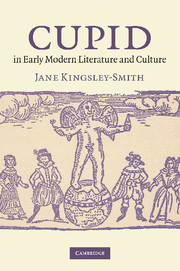Book contents
3 - Cupid, chastity and rebellious women
Published online by Cambridge University Press: 10 November 2010
Summary
Looking back over the first three books of The Faerie Queene, Spenser's narrator perceives a disturbing pattern of female torture. He challenges the artist behind the design:
Great God of love, that with thy cruell dart
Doest conquer greatest conquerors on ground,
And setst thy kingdome in the captive harts
Of Kings and Keasars, to thy service bound,
What glorie, or what guerdon hast thou found
In feeble Ladies tyranning so sore;
And adding anguish to the bitter wound,
With which their lives thou lanchedst long afore,
By heaping stormes of trouble on them daily more?
So whylome didst thou to faire Florimell;
And so and so to noble Britomart:
So doest thou now to her, of whom I tell,
The lovely Amoret, whose gentle hart
Thou martyrest with sorow and with smart.
(4.7.1.1–2.5)In condemning Cupid's sadism, the narrator attests to women's innate vulnerability and subjection. Love's ‘cruell dart’ has only ‘add[ed] anguish to the bitter wound, / With which their lives thou lanchedst long afore’, a wound that is synonymous not merely with women's lovesickness but with their sex. But just as the fictional authorship of Cupid stands in for that of Spenser, so the victimization described seems more like a fantasy than the ‘reality’ of the poem. Passive suffering at the dart of Cupid may reflect the fates of Florimel and Amoret, but Britomart is empowered by love, taking up the sword to pursue her own erotic fulfilment.
- Type
- Chapter
- Information
- Cupid in Early Modern Literature and Culture , pp. 94 - 132Publisher: Cambridge University PressPrint publication year: 2010



